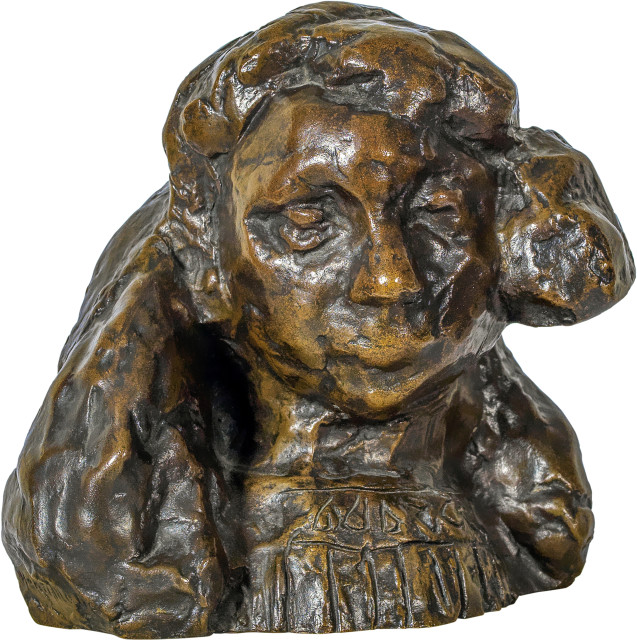- FR
S’inscrire
- Acheter
- Vendre
- Plus
- Galerie
- Commerce d'art
- Maison d'Édition
- Kornfeld aujourd’hui
- L'histoire de la Maison
- Informations




Cateau 1869 - 1954 Nizza
1906, cast approx. 1908
Bronze
16x16,5x15,5 cm
On the right with the signature "Henri Matisse", below it carved "1/10". With the foundry stamp "A. BINGEN et COSTENOBLE / Fondeurs Paris."
Claude Duthuit/Wanda de Guébriant, Henri Matisse, Catalogue raisonné de l'œuvre sculpté, Paris 1997, no. 25
Gift of the artist to
Col. Henri Manguin, Paris, 1910
Auction Drouot-Montaigne, Paris, 22.11.1987, Cat. No. 362
Auction Christie's, London, 26.06.1989, Cat. No. 32; acquired there by
International Private Collection
Perfect casting with dark brown patina
Matisse's most productive plastic creative phase was between 1900 and 1910, in which more than half of all of his sculptures were created. The subtle portraits of his children Pierre and Marguerite are certainly particularly personal. The artist gave the daughter's bronze offered here in 1910 to his colleague and friend Henri Manguin, whose son Pierre he had also portrayed in a sculpture a few years earlier (Duthuit / Guébriant 13). The early cast of "BINGEN ET COSTENOBLE" presented here served as a template (created using "Surmoulage") for the casts later made by "Valsuani" in 1930, 1952 and 1953. A very early and therefore rare cast with an exciting provenance. Nice dark patina
1906, Guss ca. 1908
Bronze
16x16,5x15,5 cm
Rechts mit der Signatur "Henri Matisse", darunter eingeritzt "1/10". Mit dem Giesserstempel "A. BINGEN et COSTENOBLE / Fondeurs Paris."
Claude Duthuit/Wanda de Guébriant, Henri Matisse, Catalogue raisonné de l'œuvre sculpté, Paris 1997,
Geschenk des Künstlers an
Slg. Henri Manguin, Paris, 1910
Auktion Drouot-Montaigne, Paris, 22.11.1987,
Auktion Christie’s, London, 26.06.1989,
Internationale Privatsammlung
Tadelloser Guss mit dunkelbrauner Patina
Die produktivste plastische Schaffensphase von Matisse lag zwischen 1900 und 1910, in welcher mehr als die Hälfte all seiner Plastiken geschaffen wurde. Besonders persönlich sind sicherlich die subtilen Porträts seiner Kinder Pierre und Marguerite. Die hier angebotene Bronze der Tochter schenkte der Künstler im Jahr 1910 seinem Kollegen und Freund Henri Manguin, dessen Sohn Pierre er ein paar Jahre zuvor ebenfalls in einer Plastik porträtierte (Duthuit/Guébriant 13). Der hier vorliegende, frühe Guss von "BINGEN ET COSTENOBLE" diente als Vorlage (mittels "Surmoulage" geschaffen) für die später von "Valsuani" in den Jahren 1930, 1952 und 1953 hergestellten Abgüsse. Ein sehr früher und damit seltener Guss mit spannender Provenienz. Schöne dunkle Patina





